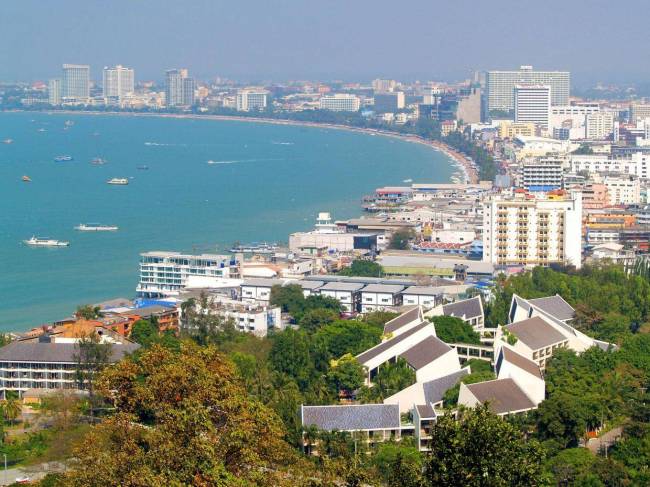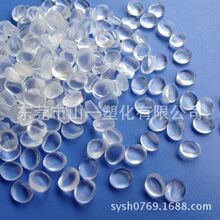It started with apples.
The viral Salmon Cannon created by fish transport developers Whooshh Innovations began with a way to quickly and gently transport the easily bruised fruit on farms. But seeing the need to more efficiently move large numbers of salmon over dams, Whooshh evolved into a means of channeling hefty fish at 25 feet per second through tubes hundreds of feet long.
"Apples are where we started," said Whooshh CEO Vince Bryan. "Our whole DNA is 'how do you move something gently without bruising it?'"
Due to the system of hydroelectric dams blocking rivers across the Pacific Northwest and other regions, salmon often need to be carefully transported upriver, where they can spawn and perpetuate their naturally, culturally, and economically valuable species. The short Cheddar-produced Salmon Cannon video recently tweeted out by self-described "futurist" Kash Sirinanda, who has no involvement with Whooshh, sits at over 24 million views as of August 13, but the cannon is no gimmick.
"It's a great tool that gives national attention to salmon," said Sara LaBorde, the executive vice president of the Wild Salmon Center and former salmon recovery policymaker with the Washington Department of Fish and Wildlife.
"Why would you need to transport salmon all that way?" asked LaBorde. "Because you’ve got all these darn dams in the way."
The latest Whooshh system, unlike the outdated viral video below featuring footage from 2016, doesn't involve people handling the salmon, but allows the fish to voluntarily swim onto a fish ladder, where they're autonomously sorted before entering the tube.
Tweet may have been deleted
Critically, research performed by the Pacific Northwest National Laboratory (PNNL), a U.S. Department of Energy Laboratory, showed that the Salmon Cannon has similar effects on fish as the traditional but significantly more time-consuming way of transporting salmon past obstacles, known as "trap and haul." (This involves trapping fish in a river, diverting them into a tanker truck, and driving them upriver past the dam).
When looking for damage to skin and reproductive health, as well as stress and immune responses, researchers didn't find anything too significant. "The fish are in good enough condition to continue on their journey," said Alison Colotelo, a senior research scientist at PNNL who studies the Salmon Cannon. "There are some impacts, but nothing that was alarming compared to how we normally move fish."
"It's an innovative technology that has lots of promise," Colotelo added.
PNNL performed studies in both 2014 and 2017, assessing how the fish fared when they were hand-loaded into the Whooshh system versus when a more advanced system autonomously sorted the fish before they entered the Salmon Cannon. In March, the lab also published a new evaluation of the Salmon Cannon, finding that the latest Salmon Cannon system is a "fish-friendlier and more flexible option" for dam operators.
LaBorde, when working on salmon policy for the state of Washington, saw that the Whooshh system reduced the impact of moving fish compared to trap and haul.
"[Whooshh] completely reduced the stress on fish," LaBorde said. "It was an awesome technology."
 An illustration of a type of "trap and haul" fish transport.Credit: noaa
An illustration of a type of "trap and haul" fish transport.Credit: noaa The exit of the Whooshh tube from the 2017 PNNL studyCredit: pNNL / Alison Colotelo
The exit of the Whooshh tube from the 2017 PNNL studyCredit: pNNL / Alison ColoteloBryan, Whooshh's CEO, is quite confident in his salmon transport system. "We won’t take a scale off the fish," he said. He also cited 23 studies, performed by government labs, private labs, and the Yakama Nation, supporting that the fish passed safely through the system without unacceptable levels of stress.
But Bryan recognizes that the moniker "Salmon Cannon" can be quite misleading. The system is designed to be relatively gentle on fish, but "cannon" certainly doesn't imply gentle. "It belies the real DNA of the Whooshh systems," Bryan said, noting that HBO comedian John Oliver made the copyrighted term "Salmon Cannon" famous in 2014 on an episode of Last Week Tonightin which, in jest, they pretended to shoot salmon at famous people.
SEE ALSO:Sad remains of Iceland's first dead glacier seen in satellite imagesThe Salmon Cannon, while a proven method of transporting fish over dams or removing fish from hatcheries, certainly can't solve all the Pacific Northwest's salmon woes. Many salmon pathways are now blocked by roads or culverts. This is bad, because young salmon seek cooler water for survival, and many of their routes are blocked.
"Imagine that all of a sudden a fish has to jump up three feet to get into a stream," said the Wild Salmon Center's LaBorde. "There's no way a juvenile fish can do that."
"They will die in warm water," she added, noting that the center is aggressively seeking out places where salmon streams are blocked. "We're on a race to find and protect them."
 A Whooshh tube traveling over a damCredit: whooshh
A Whooshh tube traveling over a damCredit: whooshhThere's an argument that technologies like the Salmon Cannon will invite more dams, and thus block more fish, because the cannon provides a way for fish to (unnaturally) surmount the great obstacles. "There are some people concerned that this opens up new ways to destroy habitat," noted LaBorde. But she sees it as a better way to move fish in a still heavily-dammed world.
Whooshh's Bryan doesn't take a position on whether more hydropower dams should come down, which would free fish. But Bryan does note that dams supply bounties of carbon-free energy. Either way, he said, "there are a lot of dams" and there will continue to be a lot of dams in the decades ahead until their power agreements or licenses run out. "Do we let the fish expire during that time?" he asked.
Next week, Whooshh plans to demonstrate the Salmon Cannon at the Chief Joseph Dam in Washington. The Upper Columbia United Tribes, made up of five native tribes, hope to reintroduce native salmon to this portion of the river — a river that once teemed with the fish. Some 80 years ago, the dams cut them off from the region. "Reintroduction of salmon will reconnect fish, people, and lands together — that is, restoring the health of the river and all life that depends on it," the tribes wrote.
Featured Video For You
Ever wonder how the universe might end?


 相关文章
相关文章




 精彩导读
精彩导读



 热门资讯
热门资讯 关注我们
关注我们
